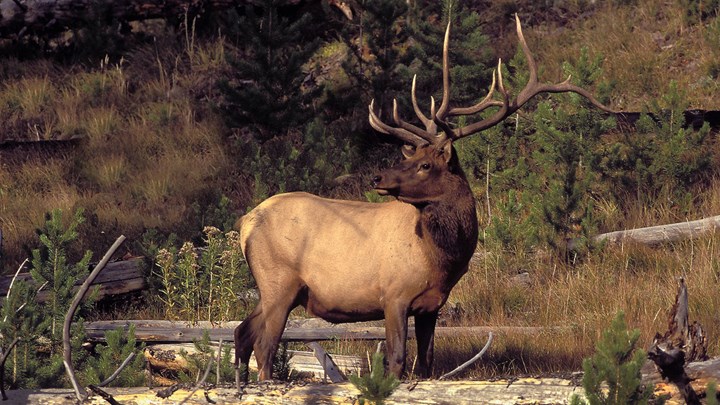
by Cody McLaughlin - Monday, December 11, 2023

It has been an exciting ride for Virginia’s elk reintroduction project as the Virginia Department of Wildlife Resources (DWR) reports that its second annual elk hunt was a success. All six tag holders got their elk while enjoying time afield and fellowship among Elk Management Zone (EMZ) landowners, hunters and residents alike.
Held from Oct. 14-20, Virginia’s 2023-2024 elk season was conducted via a computerized lottery for five of the six antlered elk tags—drawing 24,378 elk license applicants—with the sixth hunter chosen by the Rocky Mountain Elk Foundation through a separate raffle per the Elk Conservation License Program. Other stipulations included making sure that one license went to a hunter who resided in the elk management zone and that no more than one license could be issued to an out-of-state hunter. The EMZ includes three counties: Buchanan, Dickenson and Wise.
As far as hunter access goes, the DWR’s strong relationship with landowners and stakeholders shined through as 20 landowners enrolled in this season’s Elk Landowner License Program, not counting the additional landowners who permitted access for elk hunters without being enrolled, resulting in an eye popping 17,000 acres available for elk hunting. Landowners did everything from volunteering as guides for the hunt to helping successful hunters retrieve their harvest and get to the check station—a true show of sportsmen afield helping one another. The DWR relies on the generosity of private landowners to conduct its elk season as there is no public land with elk hunting opportunities in the Elk Management Zone.
According to the DWR biologist Jackie Rosenberger, the smallest bull harvested was a 2½-year-old, weighing 526 pounds, and the largest bull, whose age will be determined later via cementum annuli, weighed 755 pounds. In addition, one of the original 75 elk that was transported into the state for the reintroduction program was tagged this year and was aged at 11.5 years old.
Elk reintroduction has brought more awareness to the herd and on how Virginia is leading efforts for bringing back elk to the East Coast. As Rosenberger noted in a blog post on the agency’s site, “We are still growing the elk population and have plenty of room for population expansion within the Elk Management Zone. The purpose of the hunt is actually not for population control, rather it is about providing recreational opportunities for hunters.” He cited evidence that the elk population is abundant enough that the harvest of six bulls on an annual basis will not hinder population growth.
It was also a year for many firsts. Among them, lifelong Giles County native Wesley Woodyard harvested the first elk shot in the county in six decades—outside the EMZ—where hunters who possess a Virginia deer tag or who are license-exempt are allowed to harvest them, as long as they’re following deer season restrictions.
In seeing the success of the state’s elk reintroduction efforts firsthand, Virginia resident Gabriella Hoffman, host of the “Conservation Nation” podcast, said, “The resulting lottery hunt, now two years in existence, in SWVA is a testament to stakeholder involvement and true conservation working in real time.”
Virginia continues to lead the pack among East Coast states’ reintroduction efforts. And while growth in other states is slow, efforts by conjoining states to continue to grow their herds may mean that in our lifetime we will see a meaningful resurgence of the elk herds that sustained our ancestors dating back to landing on Plymouth Rock.
About the Author
Cody McLaughlin is a conservationist and conservative thought leader on public policy issues including hunting, fishing, gun rights, free-market tax and wage policy and the environment. He recently launched Trout Stream Studios as an executive producer for podcasts and livestreams in the hunting and veterans’ affairs spaces, including for the Congressional Sportsmen’s Foundation’s “The Sportsmen’s Voice” podcast.” He works full time as a digital media consultant, serves on the board of the Alaska Outdoor Council (the Last Frontier’s State’s NRA Affiliate) and is a former board member and lead spokesman of the New Jersey Alliance, helping to represent the state’s 1.2 million sportsmen in the political arena.
E-mail your comments/questions about this site to:
[email protected]
Proudly supported by The NRA Foundation and Friends of NRA fundraising.
